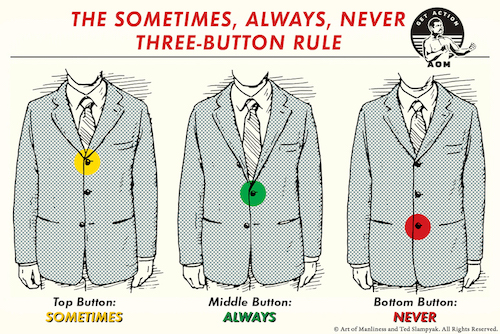
Towards the tail end of 2016, my productivity took a big leap forward. The first catalyst was taking a few weeks to diligently track my time, and therefore find out exactly where it was being wasted. It was a tremendously helpful exercise.
The second catalyst was discovering the “Rule of 3” in order to work deliberately through my day rather than reactively.
What is the Rule of 3?
While it’s a concept that’s been discussed in various blogs and books, author Chris Bailey defines it thusly: “At the beginning of each day, before you start working, decide what three things you want to accomplish by the end of the day. Do the same at the start of every week.”
It’s a simple, yet game-changing concept. While it’s actually fairly easy to execute, below I’ll take you through the reason it’s so important to do, as well as some quick tips for utilizing the Rule of 3 to its maximum potential.
Before we get started, let’s do a brief reset of what we think of as productivity.
A Quick Redefinition of Productivity
People often think of productivity as the amount of stuff that got done — a measurable number of tasks. The more boxes that have been checked off the to-do list, the more productive a day has been.
To put it simply, that’s a terrible way to determine your productivity.
It assumes that every item on your list has equal value, and that’s simply not the case.
If your to-do list has 15 things on it, but only one of them is truly important to get done today, what good does it do if 14 of 15 items are checked off and yet the single most important item remains?
A better way to approach your productivity is to ask a simple question at the end of each day: “Did I get done what I intended to?” Or as Bailey puts it: “Productivity isn’t about doing more things — it’s about doing the right things.”
There are always plenty of good things to cross-off your to-do list, but superior productivity requires tackling the best things first. The stuff that has the greatest leverage and ROI in moving you closer to your goals.
In order to determine what that stuff is, you need to know the outcomes that have to happen in order for you to have a successful and productive day/week/month/year. Then you need to think about the things you could do that would add the most value to your company or business, and produce those outcomes.
In my case, for example, the things that most add value in my work on the AoM website and podcast include getting articles ready, lining up podcast guests and producing the show, and writing articles myself. The outcomes in those instances are having quality articles ready to hit “Publish,” getting great guests on the schedule and top-notch shows at the ready, and sending articles to my editor.
If my primary, most important intention in a given day is to finish writing an article, but I got waylaid by less significant things on my to-do list because they were easier to work on and check off, then I would not be able to answer the question “Did I get done what I intended?” in the affirmative.
To reiterate: productivity is not about the amount of tasks you marked off, but whether you did the right things, and got done the important, intended tasks that will add value to your business.
The Benefits of Implementing the Rule of 3
“Is your day by design or by default?” –J.D. Meier
Rather than having a running list of 10, 20, or even more items on your daily to-do list, or worse, going into a work day blind and without any direction, there come a great many benefits from simply writing down the 3 most important things you want to get done, and giving those things your laser focus and highest energy.
You work deliberately rather than reactively. A lot of people work based on the input they get throughout the day — their schedule defaults to whatever happens and comes in from the moment they sit down at their desk: phone calls that need answering, emails that need replies, a boss reminding them of something they forgot to do. When you use the Rule of 3, however, you design your day based on your job description and what will add the most value to your business. Wouldn’t you rather have the job on your business card versus the job of Office Firefighter? Don’t walk into your day without a plan; it’s a recipe for being controlled by outside influences rather than what’s most important.
Keeps you on track when you get off track. If you’re like me, you’ve had moments in the day where you snap to reality and not only realize you’ve been distracted for 30 minutes, but you can’t even remember what you were working on before. When you have 3 high-priority items written out, though, you can always turn to them and know exactly what was happening, and what needs to happen throughout the rest of the day.
It’s simple enough that you’ll actually do it. One of the problems with productivity systems is that they often get overly complicated. I can’t think about David Allen’s Getting Things Done without being overwhelmed. The Rule of 3 is simple enough that you’ll actually do it every day (and week). All you have to do is learn to prioritize what the 3 most important things are (an ability that comes with time and repetition).
Unimportant tasks get sloughed off. There are bound to be things on your to-do list that just aren’t very important. Rather than carrying over those tasks from day to day and week to week, you’ll come to realize that if they never hit your Rule of 3, they may not actually need to get done at all, or maybe someone else is better equipped. Don’t let the unimportant things muck up your productivity.
Keeps your supervisors/teams from getting overwhelmed. Rather than sending your supervisor a bloated list of things you’re doing, why not just convey the three most important, value-adding things? They’re far more likely to pay attention, both when you’re presenting what you’re doing and communicating positive results. They won’t care so much about the easy tasks that you’re expected to do, but they will be impressed when you can point to 3 things every day and week that really added value to the company.
The same goes for teams. If you’re in charge of a product launch team, you don’t want to give them a hundred things to do in a given day. Provide 3 primary outcomes, however small they need to be to get done in a day, and you’re far more likely to see consistent and positive gains throughout the project, and your team won’t feel overloaded and bogged down.
Tips for Getting the Most Out of the Rule of 3
As noted at the top, implementing the Rule of 3 is very simple in concept: write out the 3 most important things you need to get done that day. But, there are a few tips to pass on in order to get the most out of it.
Use the Rule of 3 not only for your day, but also your week, month, and year. As I’ve alluded to, the Rule of 3 can apply to much more than just your day. Use it to plan your week and month by outlining the 3 most important outcomes for each respective time period, then planning your weeks/days based on the smaller actions that need to happen for those outcomes to come to fruition. This can be harder because of the slightly larger scope (in my experience, it’s just easier to think of things that need to get done today), but imagine yourself on Friday afternoon or at the end of the month, and ask what would cause the most pain if it weren’t done.
Use a paper notebook. As with anything related to productivity these days, you can sure use this system digitally. Write a memo on your iPhone, jot it down in Evernote, etc. But in all my reading and own experience with the Rule of 3, it seems universally accepted that paper is best. Writing it out by hand on a tangible sheet of paper makes it more memorable — better imprints it onto your brain. You can keep it on the desk next to your computer so that you can always see it and stay on track, rather than having it be lost as one of a hundred internet tabs or in your cell phone, which is residing in the black hole of your pocket.
Plan the day/night before. While you can certainly do the Rule of 3 when you walk into work in the morning, I’ve found that I’m much less stressed out and ease into working much better when I already know what I’m going to do and can hit the ground running. Rather than spending 20-30 minutes of your fresh energy on planning, why not just jump right into things? To make this happen, I’ve taken to spending the last 15-20 minutes of my day planning the next day’s Rule of 3, as well as taking time to…
Reflect. At the end of the day (and week, month, and year), reflect on how you did. Were your goals realistic? Were you too ambitious, or not ambitious enough? Over time you’ll come to learn what you can and can’t do within a given timeframe (performing a time tracking inventory will speed this learning process along!).
Be flexible. If you get your 3 things done, don’t just call it quits for the day and say “Well, I’ve gotten done what I need to, time to slack!” As J.D. Meier says in Getting Results the Agile Way, “First nail the three items you want to accomplish, and then bite off more.” And if you didn’t get your 3 tasks done, be forgiving. Maybe you weren’t realistic. Maybe it was just a bad day. We’ve all had ‘em. The beauty of the Rule of 3 is that you start fresh every morning, even if an item needs to carry over.
React when needed. No matter how deliberate we are with our day, sometimes our actions are still based on something that arrives out of the blue. In those instances, perform a quick triage. In a nod to David Allen, Meier says to either “do it, queue it, schedule it, or delegate it.” To know what the right thing is — whether you should do it or file it away — you can ask yourself “What’s the best thing — the thing that gives my job and company the most value — to do next?”
Have a personal Rule of 3. When you’ve nailed the Rule of 3 for work, create another Rule of 3 list (daily, weekly, etc.) for your personal/home/family goals and to-dos. Nail your work life, nail your home life, rule the world!
When I haven’t planned out my Rule of 3 for the day, I can tell. My productivity suffers, and even somewhat surprisingly, so does my motivation. I’ve come to discover that being able to accomplish 3 important things in a day, even if they’re micro-tasks (like sending an email) in service of a larger project, can be a real driver to feeling satisfied and accomplished with one’s day.
Rather than your day happening by default, take steps to deliberately design it yourself by implementing the Rule of 3.
____________
Sources
The Productivity Project by Chris Bailey
Getting Results the Agile Way by J.D. Meier







